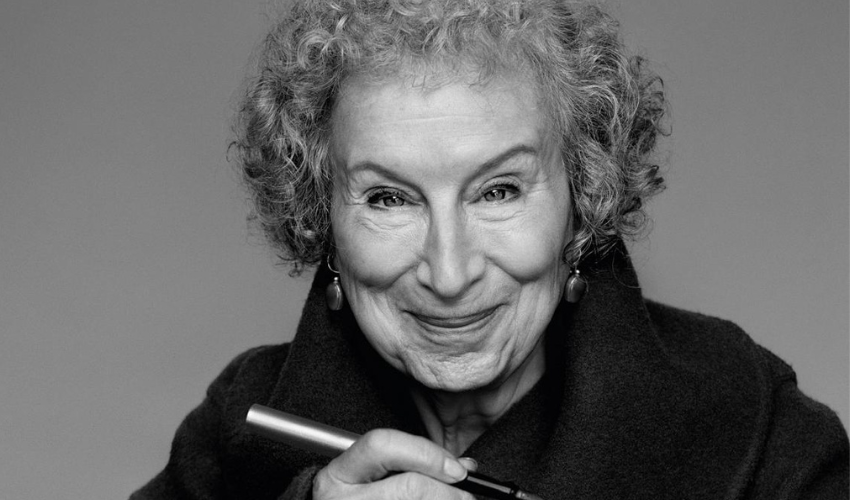Margaret Atwood, The Prophet of Dystopia, Pens Down: 10 Guidelines For Writers To Follow
Margaret Atwood, who spent part of her childhood in Canadian forests, decided to pursue a career as a writer while still in high school. She continued to write and won the Booker award after achieving international recognition before becoming a human rights campaigner.
Atwood does not need a specific workstation set up in a specific manner before she can start writing, unlike many other authors. She said, “There’s a good side and a bad side to it. “If I did have those things, then I would be able to put myself in that fetishistic situation, and the writing would flow into me, because of the magical objects. But I don’t have those, so that doesn’t happen.” She can write anywhere and does it frequently, which is a plus. She has no inhibitions when it comes to genre. The roughly sixty volumes in Atwood’s bibliography include novels, poetry, anthologies of short stories, works of critique, picture books, and, most recently, a comic book series about the superhero Angel Catbird, who is half cat, half bird, and half human. She casually mentions her adaptability. “I always wrote more than one type of thing,” she said. “Nobody told me not to.” On one occasion, over tea, she showed an interviewer her left hand: it had writing on it. “When all else fails, you do have a surface you can write on,” she said.
Atwood travels regularly and has frequently spent months at a period living abroad, often in settings that a less adaptable artist could find impossible to concentrate in. While on a fellowship in West Berlin in 1984, she began writing “The Handmaid’s Tale” on an old, cumbersome typewriter that she had to borrow. (She was thinking about Orwell.)

Margaret Atwood, author of The Handmaid’s Tale
Margaret Atwood pens down 10 guidelines/ dos and donts for authors to follow throughout their journey as a writer. Needless to say, they worked well for her.
1. Take a pencil to write with on aeroplanes. Pens leak. But if the pencil breaks, you can’t sharpen it on the plane, because you can’t take knives with you. Therefore: take two pencils.
2. If both pencils break, you can do a rough sharpening job with a nail file of the metal or glass type.
3. Take something to write on. Paper is good. In a pinch, pieces of wood or your arm will do.
4. If you’re using a computer, always safeguard new text with a memory stick.
5. Do back exercises. Pain is distracting.
6. Hold the reader’s attention. (This is likely to work better if you can hold your own.) But you don’t know who the reader is, so it’s like shooting fish with a slingshot in the dark. What fascinates A will bore the pants off B.
7. You most likely need a thesaurus, a rudimentary grammar book, and a grip on reality. This latter means: there’s no free lunch. Writing is work. It’s also gambling. You don’t get a pension plan. Other people can help you a bit, but essentially you’re on your own. Nobody is making you do this: you chose it, so don’t whine.
8. You can never read your own book with the innocent anticipation that comes with that first delicious page of a new book, because you wrote the thing. You’ve been backstage. You’ve seen how the rabbits were smuggled into the hat. Therefore ask a reading friend or two to look at it before you give it to anyone in the publishing business. This friend should not be someone with whom you have a romantic relationship, unless you want to break up.
9. Don’t sit down in the middle of the woods. If you’re lost in the plot or blocked, retrace your steps to where you went wrong. Then take the other road. And/or change the person. Change the tense. Change the opening page.
10. Prayer might work. Or reading something else. Or a constant visualisation of the holy grail that is the finished, published version of your resplendent book.
Never stop honing those instincts, whatever the circumstance.


Leave a Reply